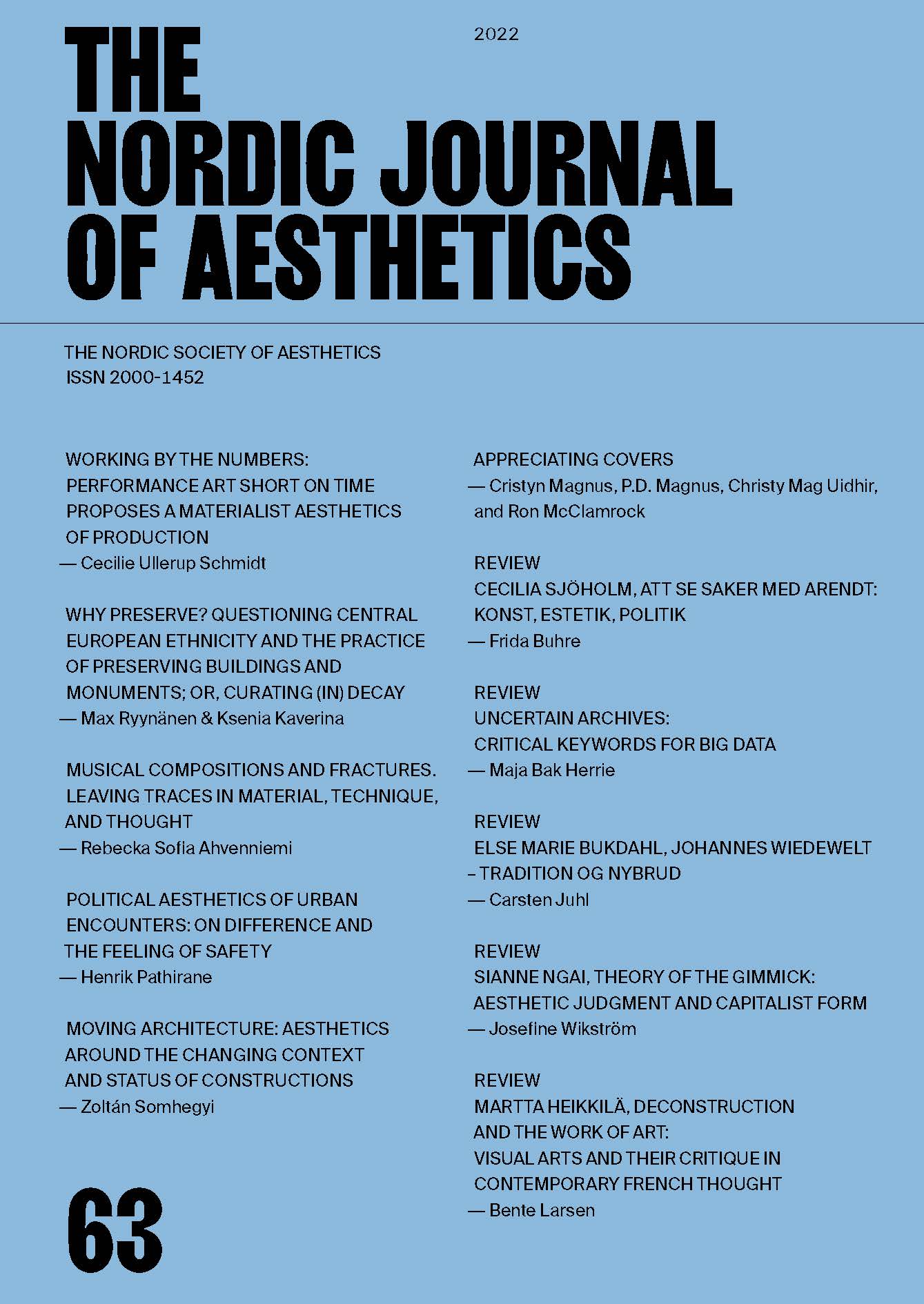MUSICAL COMPOSITIONS AND FRACTURES
LEAVING TRACES IN MATERIAL, TECHNIQUE, AND THOUGHT
DOI:
https://doi.org/10.7146/nja.v31i63.133119Keywords:
Musical composition, Theodor W. Adorno, Sofia Gubaidulina, Critical theory, Lingering reflectionAbstract
“Each and every important work of art leaves traces behind in its material and technique,” Theodor W. Adorno postulates in Aesthetic Theory, as he describes the way a composition is both a result of its own time and reacts critically to the time it belongs to. This quote demonstrates a reversal: rather than merely an expression or an outcome of an artist’s idea, art itself is regarded as a source for change. The work may come to affect its own tools and materials and the social space around it. The primary question of this article is: what is it in musical composition that leaves the traces? This article attempts to move the focus away from discussion of finished works, and instead, depict how composition as a discipline engages in dialogue with its handcraft, historicity, and surrounding social world. I call this aspect of composition that possesses critical potential a lingering reflection. Slow and heteronomous in its nature, it presents a counterpoint to ideas that seem solid, are easily accessible and unquestioned.
Downloads
Published
How to Cite
Issue
Section
License
Copyright (c) 2022 Rebecka Sofia Ahvenniemi

This work is licensed under a Creative Commons Attribution 4.0 International License.
Authors who publish with this journal agree to the following terms:
- Authors retain copyright and grant the journal right of first publication with the work simultaneously licensed under a Creative Commons Attribution License that allows others to share the work with an acknowledgement of the work's authorship and initial publication in this journal.
- Authors are able to enter into separate, additional contractual arrangements for the non-exclusive distribution of the journal's published version of the work (e.g., post it to an institutional repository or publish it in a book), with an acknowledgement of its initial publication in this journal.
- Authors are permitted and encouraged to post their work online (e.g., in institutional repositories or on their website) prior to and during the submission process, as it can lead to productive exchanges, as well as earlier and greater citation of published work (See The Effect of Open Access).




